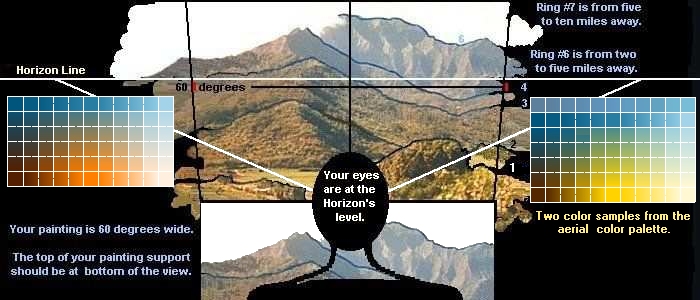
Aerial perspective on Concentric Rings
|

Aerial perspective on Concentric Rings
|
|
Aerial perspective on Concentric Rings I like to think of Ring#5 as a mile out, That's easy to remember, Ring#7 is actually a mile in distance away from you. The important thing is changing pigment color for your shadows and highlight colors again after one mile's distance. The distance between the ten concentric rings really starts to increase from there out. These are the values on a clear day at noon. Ring 1, is about 10 yards (9.14 m) distance from you, you should first notice a value difference here, find some objects to mark this distance. Many objects in a row are nice. Within this first ring are the darkest dark shadows, not to be repeated again in any other ring. Magenta and Green make the darkest neutral shadows in the foreground. Ring 2, 15 to 25 yards (13.70 to 22.86 m) away from you. The darkest shadows may be an ultramarine blue and burnt umber mix depending on the time of day. Ring 3, is 25 to 55 yards (22.86 - 50.29 m) away from you. These color changes are obvious when you pick your colors at these distances. Ring#4. Here starts the addition of a minimal portion of the split analogious Green and Purple color mixed 1:1.
|
|
THIS CHART SHOWS 10 COLOR PROGRESSIONS OF LOCAL AND SHADOW COLORS FROM THE FOREGROUND TO THE BACKGROUND AND SKY, PLUS WHITE. 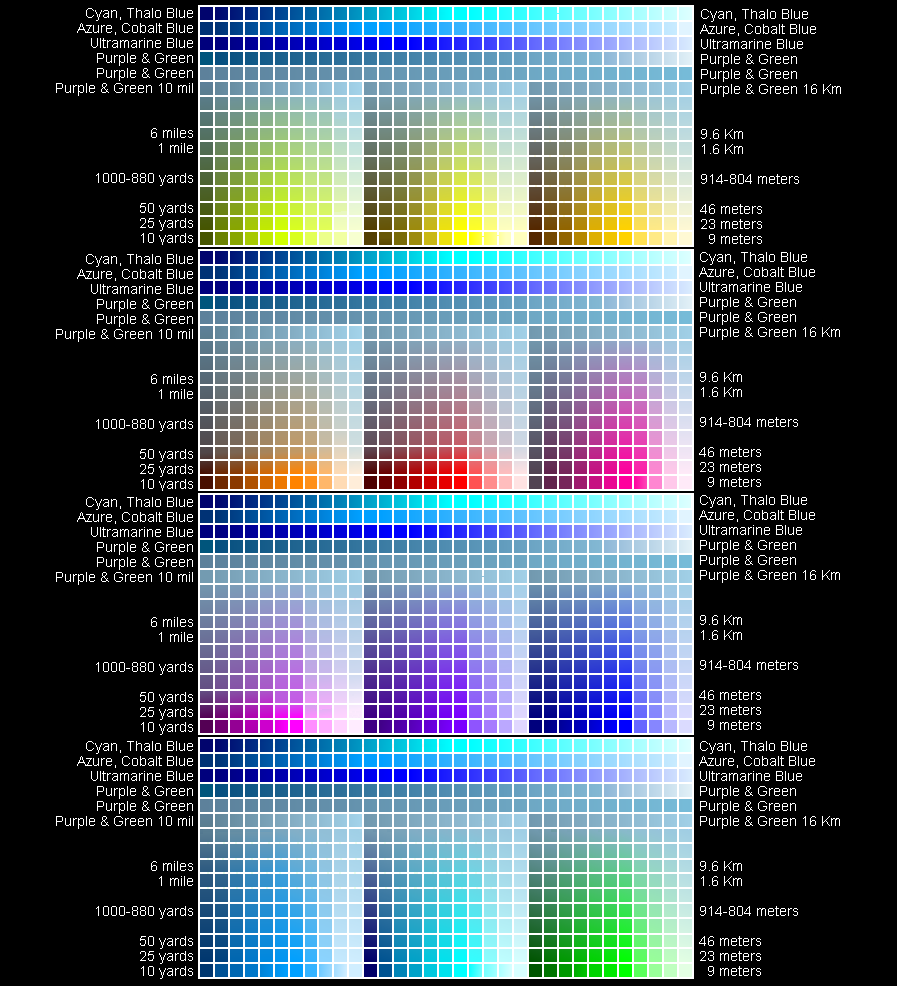
All Ring 1 foreground noonday shadow colors change from a
Click here for this palette
|
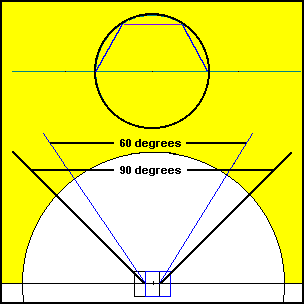
|
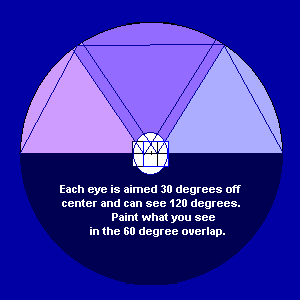
|
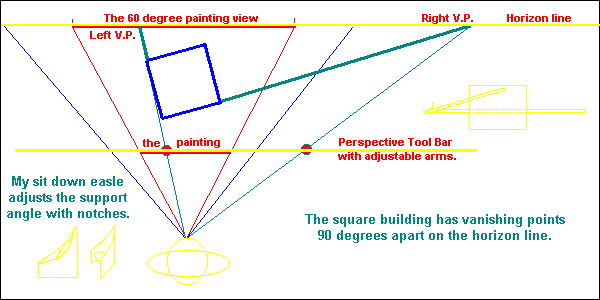
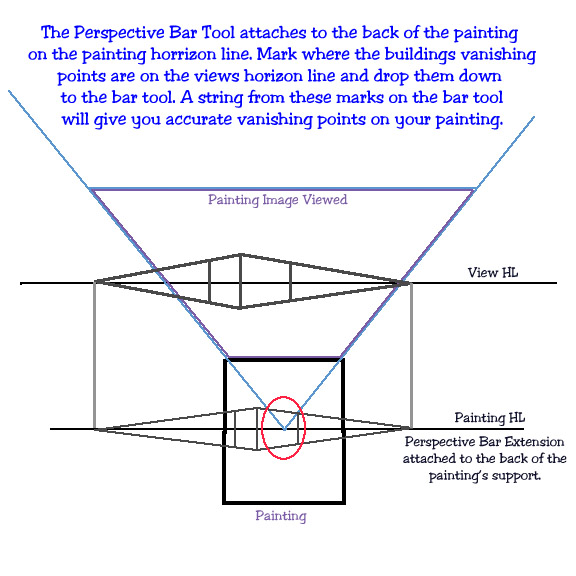

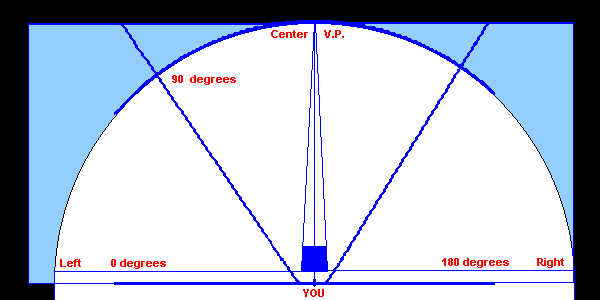
| Here is the straight horizon line used in conjunction with the surrounding concentric ring horizon line.
See how hard it is to relate the 90 degree angle of a box turned at this angle on a straight horizon, the straight horizon
line would have to be a very long gentle curve. It's simple on a concentric circle horizon line and the Horizon Bar Tool.
|
| Every square object has a right and left vanishing point 90 degrees apart on the horizon line. This puts one of the vanishing points 30° out of any normal 60° painting. |



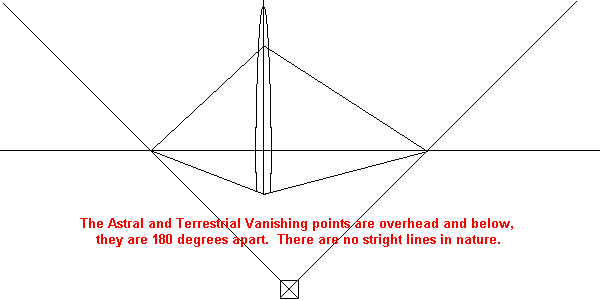
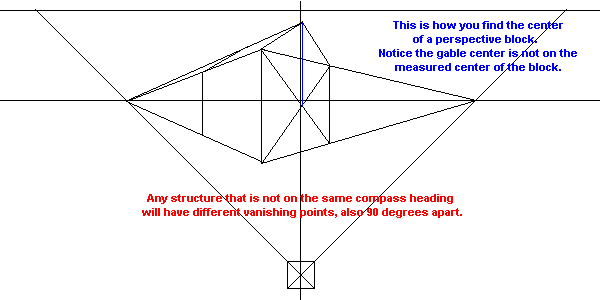
The box is where your feet are, the horizon line is where your eye level is.
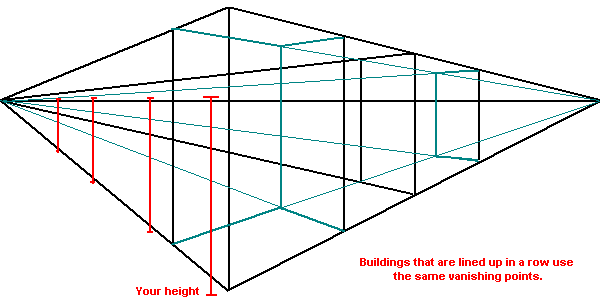
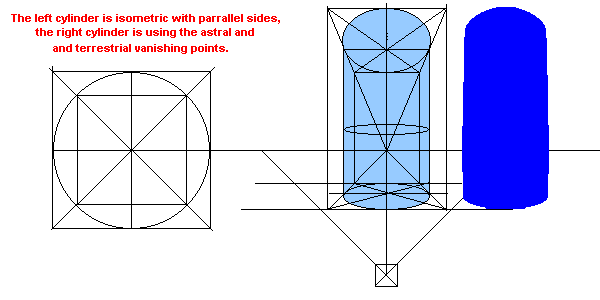
NEXT Perspective 102
PREVIOUS Crystals of Color
edu., art: Paint anything in front of you with accurate colors. Use a new, different, color wheel and palette that matches the light and shadows with pigments. |
